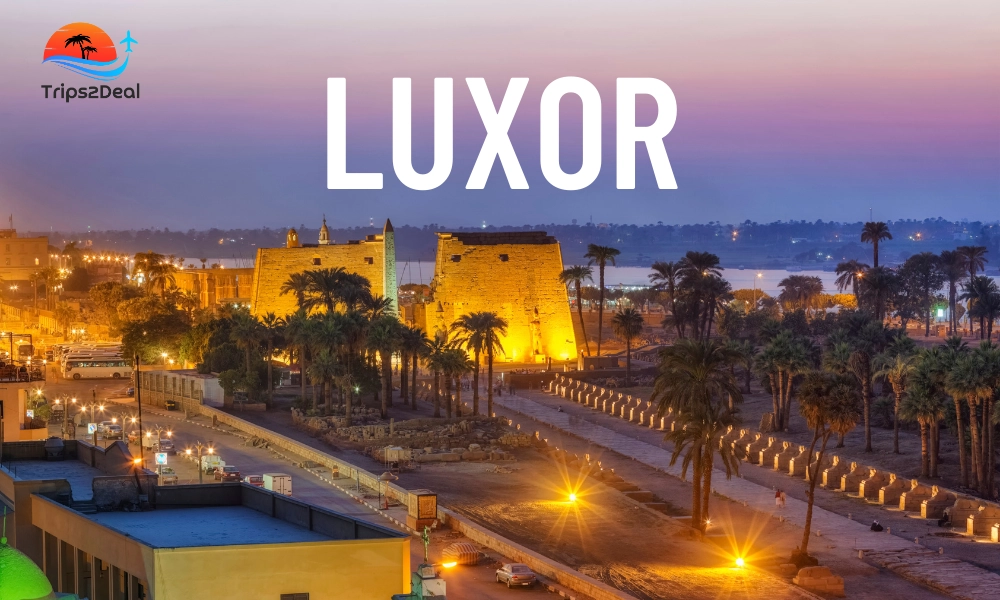Blogs

Luxor Museum
The Luxor museum is located in the heart of the city Thebese which is known as Luxor in present days. A gem of Egyptian heritage that is nestled on the east bank of Nile river which is bridging the ancient world with modern days.It’s splendor is due to its meticulously selected and elegantly displayed artifacts which reflected the ancient Egypt splendour.
Table of Contents
- Cradle of Ancient Egypt: Luxor
- Vision and purpose of Luxor Museum
- Design of the Museum
- Collections of the Luxor Museum
- The Royal Mummy Cache
- The Luxor Museum Extension (2004):
- Unique Exhibits You should not Miss at Luxor Museum
- Educational Role of the Luxor Museum
- Visiting Luxor Museum Today: A Guide for Tourists
Cradle of Ancient Egypt: Luxor
The political and religious hub that served as a center of power and Capital in ancient Egypt. Some great pharaohs' homes such as Hatsphust, Amenhotop II and Ramses II. It has the iconic archaeologist sites such as Karnak Temple, Luxor Temple and Valley of kings. These all significant surrounds provide the historical context for the Luxor museum which was situated in the ancient Egyptian civilization.
Vision and purpose of Luxor Museum
The luxor museum doors were opened in 1975 with a vision to showcase the rich archaeological finds from the luxor region and present them in the modern thoughtful environment. The Egyptian museum in Cairo offers you the vast collection while the luxor museum gives you the glimpse that is more focused on experience and holds rich history. This museum is developed by the collaboration of Egyptian Antique organization and international archaeologists in order to preserve and to celebrate the artistic and historical legacy of Luxor.
Design of the Museum
The architectural design of the museum was proposed by an Egyptian architect Mahmoud el hakim. The design of the building is that simple and has the functionality to allow the artifacts to easily reach their decided destination. Its contemplative environment is created through the dim light and wide galleries. The natural light enhances the dramatic presentation of statues, reliefs and treasure of the Luxor Museum.

Collections of the Luxor Museum
The museum holds a selective collection of the artifacts mostly from the New Kingdom. Some of the notable collections are:
- Statues and Sculptures of the Pharaohs: The commanding presence of the statues of the great pharaohs such as Amenhotep III, Ramses II, and Thutmose III is unbeatable.
- Artifacts from Theban Temples: This collection shows the religious beliefs of an ancient Egyptian as it holds the Carved stelae, offering tables, and temple reliefs.
- Treasures from the Tomb of Tutankhamun: Some selective artifacts of the boy king such as weapons and ceremonial items reflect his lifestyle.
- Mummies and Human Remains: The remains that allow you to look into the ancient burial practices and their beliefs for an afterlife journey.
- Relics from the New Kingdom Era: Lots of artifacts that reflect the use in the daily life of ancient Egyptians. These artifacts like tools, pottery and jewelry.

The Royal Mummy Cache
In the museum there is an roal cache that holds the two royal mummies. These mummies are believed to be the mummies of great pharaohs Ramses I and Ahmose I which are on display under the control environment and lightning conditions in order to protect and preserve them perfectly. This section of the museum allows the visitors to see the individuals of an ancient time who ruled on Egypt.
The Luxor Museum Extension (2004):
To accommodate the new discoveries from the Valley of Kings & Queens, the museum went under extension in 2004. This extension's purpose is to preserve the more artifacts to make the museum more experienced and informative for the modern audience.
Unique Exhibits You should not Miss at Luxor Museum
Following are the some unique exhibits that provide you the unique experience in the museum that you should not miss:
- The pair of the statues of Amenhotep III and Sobek that represent the pharaoh and crocodile god.
- Akhenaten’s Artistic Revolution: Number of pisces that show you the shift toward realism in art from the Amarna period.
- A wall that was reconstructed to show the carvings and rare imagery of the sun god Aten. This wall is part of the Akhenaten’s Temple.
- The artifacts that are used in the daily routine like combs, mirrors, swords and cosmetic jars which shows a personal connection to the ancient Egyptian.
Educational Role of the Luxor Museum
The workshops, public lectures and school visits are also held in the museum that allow the young Egyptian and global visitors to provide cultural awareness and historical education. This museum also supports the historical ongoing research by the collaboration of the international universities and archaeological missions. So, it's not only a tourist place but also plays a critical educational role.
Visiting Luxor Museum Today: A Guide for Tourists
The museum is open daily from morning to evening and handles thousands of visitors annually. Although its location along the El-Nile provides the scenic view of the Nile to the visitors. Following is the helping information if you are going to visit the museum:
- The luxor museum is typically open from 9:00 am to 9:00 pm daily.
- There is a ticket office on the spot, although the price for the foreigners is 400 EGP for adults and 200 EGP for students. For the Egyptian and Arabs, the price is 30 EGP for adults and 10 EGP for students. Check prices here.
- Recommend you to visit the museum in evening/ night for a quieter and dramatic light experience.
While other museums like the Egyptian museum that amazed you with the extensive collection but the Luxor museum are focused only on the artifacts and discoveries that are from the Theben region. So, if you are in Luxor then you should visit this museum to enhance your experience in Egypt.





